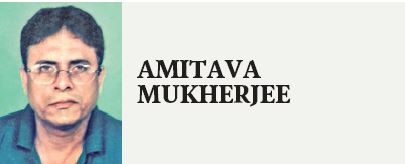Published: Published Date – 11:59 PM, Wed – 30 March 22
By Amitava Mukherjee
Bhagwant Mann, the new Chief Minister of Punjab, will have to face the daunting task of eliminating the drug menace which has become the greatest social threat in the strategic State. Even in 2020, Punjab stood second in the country so far as registration of cases under the Narcotic Drugs and Psychotropic Substances Act (NDPSA) is concerned. A total of 4,039 cases were registered under this Act for carrying drugs meant for trafficking. The corresponding figure for consumption related cases was 2,870. This is a 40% reduction from the total number of registered cases under the NDPSA in 2019.
However, this should cause no relief to the new Punjab government as the reduction was mainly due to Covid-related lockdowns and other restrictions. Moreover, if the population crime ratio is taken into account then Punjab still tops the list of crimes under the NDPSA — with 22.9% crime rate while that of Uttar Pradesh, the topper in terms of absolute numbers, is only 4.7%.
Opium Production
The drug menace in Punjab has an umbilical relationship with opium production in Afghanistan because heroin, one of the derivatives of opium, is now ruling the roost in Punjab’s drug scenario. A small statistics will make the situation clear. In 2017, only 191 kilogrammes of heroin was seized by the law enforcement authorities in Punjab. In 2018, the figure crossed 303 kg. In 2019, it shot up to 460 kg. In 2020, the amount reached a staggering 759 kg.
There is, however, an interesting aspect to Punjab’s drug story. The State is not known for the cultivation of natural substances like opium, cannabis or their derivatives. Neither is it known to be a home for the manufacture of chemicals which can be processed for the production of synthetic and psychotropic drugs. It is true that Punjab is situated close to the Golden Crescent comprising Afghanistan, Pakistan and Iran and the demand for drugs is entirely met by supplies from outside. But even this does not fully explain the prevalence of such an epidemic in the State. That the youth of Punjab has been falling for this suicidal addiction is explained by the rising unemployment and steadily diminishing returns from agriculture.
Realistic AAP
The Aam Admi Party is more realistic this time. Before the Punjab Assembly election of 2017, Arvind Kejriwal had boasted that “AAP would break the supply chain of drugs within a month”. But his own estimate at that time was that there are 40 lakh drug addicts in the State. Kejriwal must have realised that fighting such a gigantic problem is no easy job, mostly at a time when Afghanistan has been witnessing bumper production of opium for the last five consecutive years. In 2021, opium production in Afghanistan reached a staggering 6,800 tonnes, 8% more than the total production of 2020. This amount of opium can be processed to produce some 270-320 tonnes of pure heroin.
However, according to some other estimates, Afghanistan produces more heroin each year — 550-600 tonnes and at least 10 tonnes of it enters India via Pakistan. In Afghanistan, the price of heroin is very low. But in Pakistan, one kg of heroin is easily priced between 1 and 2 lakh rupees. In Indian Punjab, the price jumps to Rs 3 lakh per kg. The Delhi market is more liberal. There the drug cartel is prepared to pay Rs 8-10 lakh for one kg. In Mumbai, the price skyrockets — Rs 25 lakh for one kg of the substance.
Growing Interest
Bhagwant Mann’s first task should be to make agriculture in Punjab more profitable. Otherwise, he will not be able to stem the rot of at least a section of Punjabi agriculturists’ growing interest in the narcotics trade. It is a fact that some of them cooperate with Pakistani smugglers. According to an estimate by the National Drug Dependence Treatment Centre (NDDTC), more than 8.6 lakh people of Punjab are opioid users and about 2.3 lakh are opioid-dependent. The opioid-dependent individuals of Punjab spend about Rs 7,500 crore annually to quench their thirst for narcotics. Of them, heroin occupies the largest segment — about 53% of all the narcotics consumed.
Really frightening is, however, the age profile of the addicts, most of whom come from the 18-35 years age group. Among them, four out of every 100 are opioid-dependent and 15 out of every hundred are opioid users. These statistics should ring alarm bells as Punjab is a good recruitment ground for the Indian Army from amongst this age group.
Bhagwant Mann has already announced his jihad against corruption. He should set his eyes first on the narcotics sector. Penetration of drug lords runs deep into the Punjab administration. Bikram Singh Majithia, the Akali Dal leader and brother-in-law of Sukhbir Singh Badal, has been arrested in an NDPSA case. His case is sub judice and no comment should be made on it. However, in 2014, 13 policemen, including a Deputy Superintendent of Police, were sacked for their connection with drug traffickers and 70 more police personnel were found to be enjoying connections with the drug world during the same period.
If the AAP government led by Bhagwant Mann can cleanse this Augean Stable, then it will be a great service to the nation.

(The author is a senior journalist and commentator)
Now you can get handpicked stories from Telangana Today on Telegram everyday. Click the link to subscribe.
Click to follow Telangana Today Facebook page and Twitter .